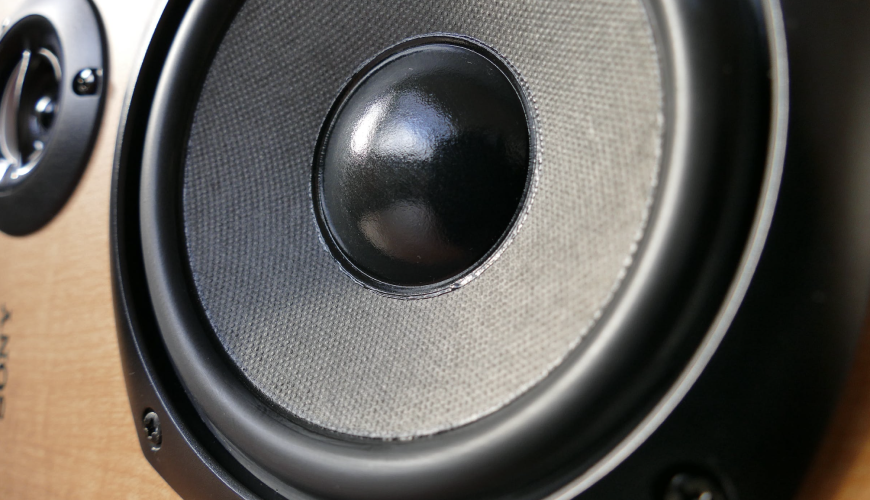Engineering can look beautiful/Form and function
Who buys high quality audio gear? These are two categories of people. One: a very small set of people who love audio gear, and keep fiddling and tweaking their audio systems to try to tailor the sound in an endless series of experiments. Their conversations are rarely about a music album - they are about their tweaks, the equipment, and how it changed the sound. These buyers buy into the myths of various speaker brands, various amplifiers, various cables and connectors. And this myth industry is fed by the constant stream of mythical articles in the audiophile trade press.




The second category is an even smaller set of music lovers who have high budgets. Most genuine music lovers know a lot about the music, the music bands and artistes, the concerts, the specific releases of various albums (“the Japanese re-press of 1978 is cleaner than the original Columbia US release of 1973”). But among music lovers, very very few have the budgets for high end audio gear. They’d all love to have awesome systems like their audiophile cousins, but they can’t make the budget.
So, who will buy my speakers? The audiophiles won’t, simply because they buy into the myths of big brands. They will never buy a system from a no-name designer who has not yet been written about in glowing reviews in the trade press. Audiophiles are extremely brand conscious – or should I say, myth conscious. They’ll buy a boutique range of products if those are written up about in the trade press as “artisanal”, “organic”, “recycled”, and “are polished by artisans in a remote Japanese village who follow a 3,000-year old zaratsu polishing technique passed down from generation to generation”. As you can see, it’s all about the myth, very little about the sound quality. And the trade press is the king-maker who makes and breaks these myths.
The well-heeled music lovers will buy my speakers, but they are a very, very, very small community.

The second category is an even smaller set of music lovers who have high budgets. Most genuine music lovers know a lot about the music, the music bands and artistes, the concerts, the specific releases of various albums (“the Japanese re-press of 1978 is cleaner than the original Columbia US release of 1973”). But among music lovers, very very few have the budgets for high end audio gear. They’d all love to have awesome systems like their audiophile cousins, but they can’t make the budget.
So, who will buy my speakers? The audiophiles won’t, simply because they buy into the myths of big brands. They will never buy a system from a no-name designer who has not yet been written about in glowing reviews in the trade press. Audiophiles are extremely brand conscious – or should I say, myth conscious. They’ll buy a boutique range of products if those are written up about in the trade press as “artisanal”, “organic”, “recycled”, and “are polished by artisans in a remote Japanese village who follow a 3,000-year old zaratsu polishing technique passed down from generation to generation”. As you can see, it’s all about the myth, very little about the sound quality. And the trade press is the king-maker who makes and breaks these myths.
The well-heeled music lovers will buy my speakers, but they are a very, very, very small community.
The second category is an even smaller set of music lovers who have high budgets. Most genuine music lovers know a lot about the music, the music bands and artistes, the concerts, the specific releases of various albums (“the Japanese re-press of 1978 is cleaner than the original Columbia US release of 1973”). But among music lovers, very very few have the budgets for high end audio gear. They’d all love to have awesome systems like their audiophile cousins, but they can’t make the budget.
So, who will buy my speakers? The audiophiles won’t, simply because they buy into the myths of big brands. They will never buy a system from a no-name designer who has not yet been written about in glowing reviews in the trade press. Audiophiles are extremely brand conscious – or should I say, myth conscious. They’ll buy a boutique range of products if those are written up about in the trade press as “artisanal”, “organic”, “recycled”, and “are polished by artisans in a remote Japanese village who follow a 3,000-year old zaratsu polishing technique passed down from generation to generation”. As you can see, it’s all about the myth, very little about the sound quality. And the trade press is the king-maker who makes and breaks these myths.
The well-heeled music lovers will buy my speakers, but they are a very, very, very small community.
So, I make speakers for my own pleasure, and then find acquaintances or friends who can be persuaded, brow-beaten, or threatened to buy the latest pair off me, so that I can start work on the next. All my designs are one-off prototypes.